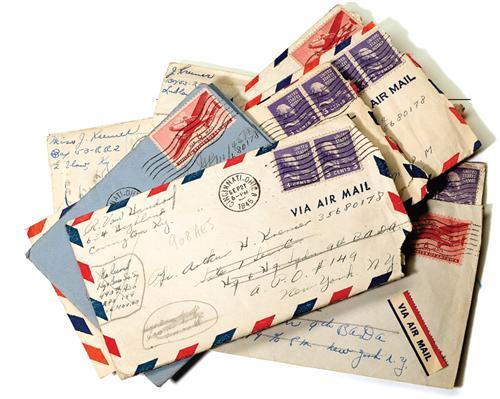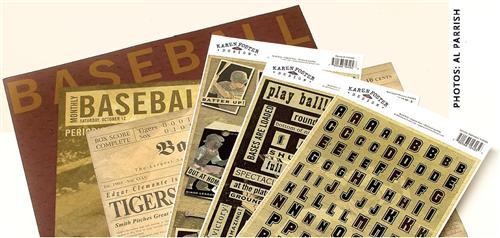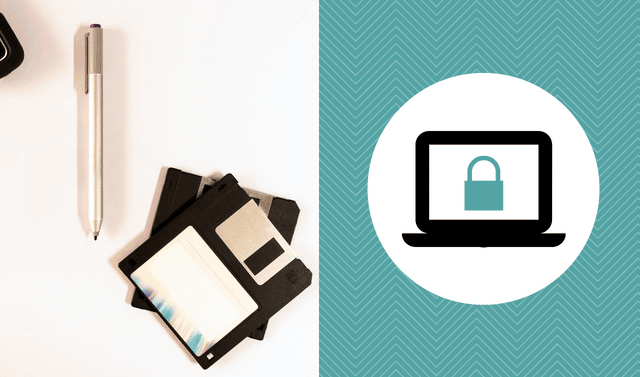Sign up for the Family Tree Newsletter Plus, you’ll receive our 10 Essential Genealogy Research Forms PDF as a special thank you!
Get Your Free Genealogy Forms
"*" indicates required fields
Safe Keeping: war of words
On Veterans Day 1999, Dear Abby mentioned historian Andrew Carroll’s small Legacy Project <warletters.com> to gather and preserve war letters between soldiers and their loved ones back home. Abby’s readers dug into their attics and drawers, and sent 50,000 pieces of what Carroll calls history’s undiscovered literature.
“You really get a sense of who these soldiers are. Their letters are snapshots of how they were feeling, not just how they looked,” says Carroll. “People come across the letters and say, ‘Grandpa wrote that?’”
The Legacy Project has published letters from the American Revolution to the Gulf War in books including War Letters: Extraordinary Correspondence from American Wars (Scribner), which became the basis for a PBS documentary <pbs.org/wgbh/amex/warletters>. Now Carroll’s holding letter-writing workshops for military stationed in the Middle East and promoting the National Endowment for the Arts’ Operation Homecoming: Iraq, Afghanistan, and the Home Front, in the Words of US Troops and Their Families (Random House).
Chances are you have soldier relatives’ letters languishing in a shoebox somewhere. Carroll shared his recommendations for preserving and sharing them.
• Spread the word. “Make sure other family members know about the letters,” says Carroll. That’ll keep them from being accidentally tossed.
• Store smartly. Remove letters from their envelopes and open them flat. Protect them in archival folders and boxes (available from retailers such as Archival Methods <www.archival.com>) and keep them in an area with constant temperature and humidity. In a scrapbook, use Mylar or polypropylene sleeves.
• Take time to transcribe. “That’s a huge thing — it’ll be easier for people to read through the letters,” Carroll says. Start with the ones you find most interesting and go from there.
• Add to the story. Carroll adds historical context to letters in his books. You can do the same: “With the letter’s content as a focal point, write about what else is going on in the war or battle, and what ended up happening to the writer,” Carroll says. Research your ancestor’s regiment and service records, and read local newspapers for the home-front perspective.
• Share the wealth. Framing, scrap-booking or publishing letters in a book lets your family appreciate them, too. “We encourage people not to display originals,” Carroll says. “Instead, make a color photocopy and frame it.” Adding a photo gives everyone a face to go along with the words. Keep it as simple as photocopied letters in a binder, or put letters in a scrapbook or book with citations of honor and battlefield maps.
• Save today’s letters. Much of your modern correspondence with military relatives is probably e-mail — different from yesteryear’s missives, but no less valuable as firsthand accounts of historical events. Print e-mails on acid-free, lignin-free paper and keep them in a safe place.
Battle Sites
Start researching your military ancestor’s prose on these Web sites:
• American Memory: Military Battles and Campaigns
<memory.loc.gov/ammem/gmdhtml/milhome.html>
• History Central: America’s Wars
<www.historycentral.com/wars.html>
• Historynetcom: Military History
<www.historynet.com/magazines/military_history>
• Military History Online
<www.militaryhistoryonline.com>
• Military.com History Center
Scrapbook photos of your favorite sports nut with sports-themed papers — their vintage appeal makes them a family history hit. Create pages in a flash with six coordinating 12×12-inch paper designs for each sport (baseball, basketball, soccer, football), plus cardstock stickers and alphabets.
You already attach photos, video and audio clips to family files in your genealogy program. It’s time to take your scrapbooks into the multimedia realm, too. Lasting Impressions for Paper’s MemoryMixer <www.memorymixer.com> software lets you combine photos, video, music, graphics, Web links, scanned memorabilia and sound into a digital album — that means you can, say, assemble your grandparents’ story narrated by Grandma herself. Design page layouts from scratch with nearly 2,000 backgrounds and embellishments, plus photo-editing effects such as drop shadows and sepia tone. Short on time? Use handy features called InstaMix (the software creates pages from photos and backgrounds you select) and QuickMix (you insert photos into one of 30 professionally designed album templates).
The memories are easy to share, with output formats including CD, hardbound book and traditional pages. (You can get a DVD, too, but you’ll have to mail in a CD and let the company transfer it for you.) See the Web site for more features, a scrapbook page gallery and a user blog. The $79.95 program is available for both PCs (Windows 2000 or XP) and Macs (OS 10.3.5 or newer); you also can get a 30-day free trial. It’s graphics-intensive, so you’ll need at least 256MB RAM and 1.5GB hard disk space.
Kerning is a graphic design trick that you can use to adjust the spacing of your scrapbook page titles for a cool, artsy look. The Hoffman Family is kinda, well, ordinary. But is more polished. You don’t need graphic design software to get the look. To kern in Microsoft Word, highlight your title, first select Format>Font and then click on the Character Spacing tab. Choose Expanded from the Spacing pull-down menu and type a value in the By field. Start with 2 or 3 and click OK. If you use another word-processing program, search the help menu for character spacing or kerning.
ADVERTISEMENT






